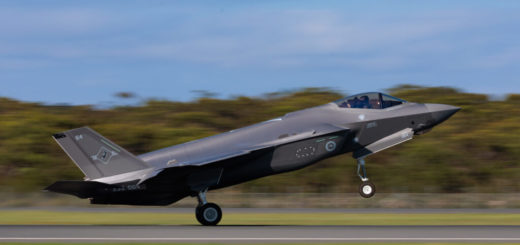Honda targets early 2026 for first flight of eVTOL prototype
Honda has outlined the most complete look yet at its plans for a new electric vertical takeoff and landing (eVTOL) aircraft, unveiling the program publicly at the Dubai Airshow 2025 after several years of low-visibility development work. The company displayed a cabin mockup, a one-third scale demonstrator it has been flying in California, and a model of the compact turbogenerator that will power its hybrid-electric design.
Honda told outlet ZAG Daily it plans to finish building its first full-scale prototype before the end of 2025. The aircraft is slated for a first flight in March 2026, flown remotely in the United States. Type certification is targeted for the early 2030s.
The update confirms that Honda has been working on the project longer and more extensively than previously known. The company has been running two sub-scale test vehicles for about two years at San Luis Obispo, California, validating flight-control laws and conducting aerodynamic testing, according to reporting by Aviation Week. Those aircraft were used to study the transition from hover to wing-borne flight and to test behavior in key failure modes, such as the loss of a vertical propulsor.
Honda’s full-scale concept demonstrator measures almost 50 feet in length and wingspan. It uses eight boom-mounted lifting propellers for takeoff and landing and two rear pusher propulsors for forward flight. The layout includes forward-swept wings in front, aft-swept wings at the rear, and vertical stabilizers at the wingtips. Honda says the configuration provides improved stability and reduces the workload on the vertical propulsors during transition from vertical to forward cruise flight.
Unlike other eVTOL concepts built around all-electric power, Honda is pursuing a hybrid-electric aircraft from the start. The company says battery energy density is still not sufficient to deliver the 400 km (249-mile) intercity range it wants to offer. To bridge that gap, Honda has designed a compact turbogenerator sized between 250-300 kW. The unit weighs less than 100 kg, is roughly 2.6 feet long and 1.3 feet in diameter, and has completed continuous and transient power runs on the ground. It is compatible with 100% synthetic aviation fuel, Honda said.
The full-scale demonstrator displayed in Dubai is all-electric and will be used to refine the aircraft configuration before Honda integrates the hybrid system. The company said it has not finalized whether the same aircraft will be converted to hybrid power, or if a second prototype will be built specifically for that phase of testing.
Honda has adjusted the aircraft’s fuselage shape and other design elements since the first renderings were released. Both the subscale aircraft and the mock-up in Dubai now share a more constant cross-section compared to earlier elliptical designs. The supplier list also remains open.
Honda officials said the timing was right to share progress after several years of subscale testing and wind-tunnel work. The company emphasized that its goal is not to be first to market, but to enter the sector with a hybrid-electric aircraft capable of longer-range missions than today’s battery-only models. The post Honda targets early 2026 for first flight of eVTOL prototype appeared first on AeroTime.
Honda has outlined the most complete look yet at its plans for a new electric vertical takeoff and…
The post Honda targets early 2026 for first flight of eVTOL prototype appeared first on AeroTime.





